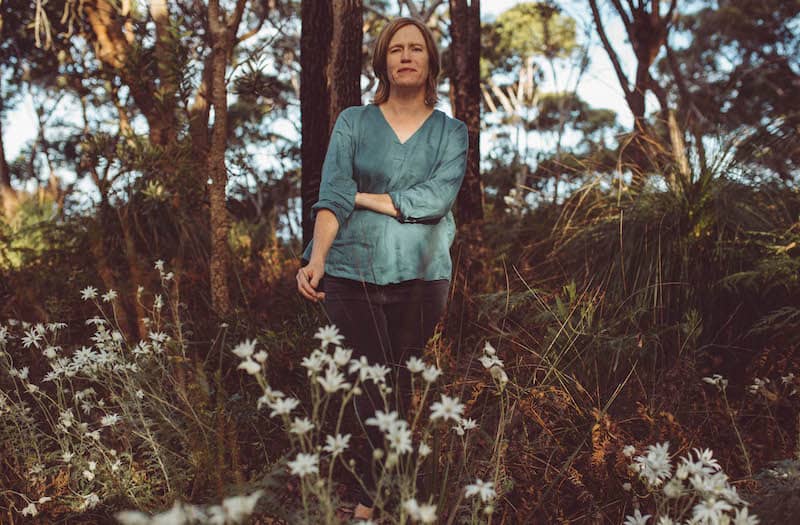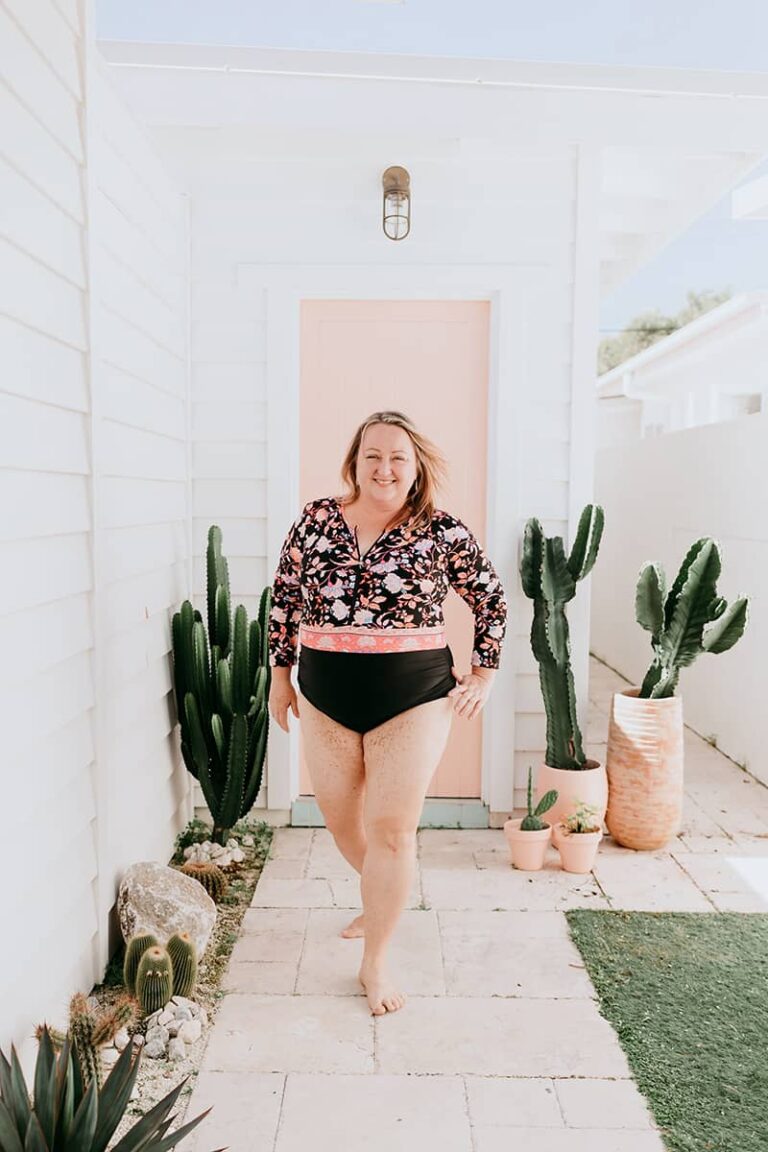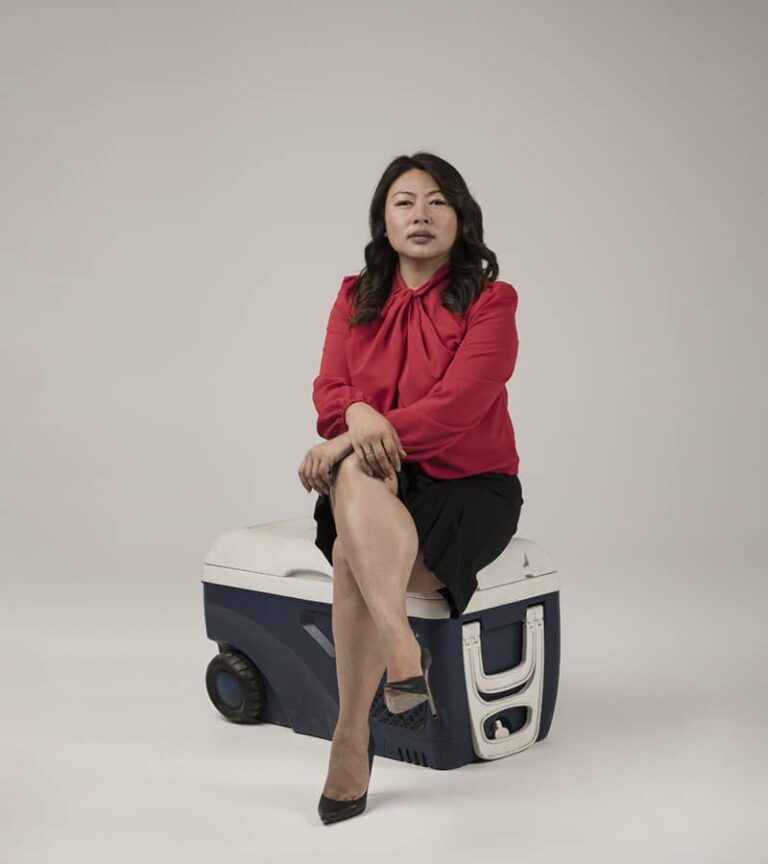In 2009, age 32, I began to suddenly lose my hair over a three-month period. Initially strands fell out in the shower and more was caught in my hairbrush. This then increased to clumps of hair.
At the time I was coming off the contraceptive pill, so there may have been some hormonal changes that contributed to it, but it was never medically confirmed. I was also studying, so there were pressures and other stresses as well. A few weeks later a visit to a dermatologist confirmed that it was alopecia areata – the medical term for an autoimmune condition that affects hair follicles and results in hair loss.
By then, most of my hair had fallen out and my eyelashes also thinned considerably. As part of the adjustment to my patchy ‘baldness’, I started to wear hats and scarves, and even a wig. I found it hard purchasing a wig. I remember crying as I tried it on. It was synthetic which made it scratchy and itchy, but on the bright side it was pretty funky as I was able to choose whatever hairstyle and colour I wanted.
I also decided to keep my diagnosis private. Only my husband and direct family members knew — mostly because I felt really ashamed of my appearance, and I was going through a deep sense of grief.
Losing my hair was literally like losing a real part of me — how I looked and how I acted before the hair loss.
Even caring for my hair was part of my daily self-care routine — washing and brushing my hair, and now it was gone. To no longer have that and stare in the mirror and see a patchy-haired scalp was confronting. My appearance was changing, and I didn’t like my new look.
I was constantly wondering what people might be saying about me. But I found that friends who I hadn’t shared anything with, actually didn’t ask or say anything, so, in hindsight I’m not sure if they ever noticed or were just discreet.
As treatment I chose a six-month course of oral steroids. Gradually, my hair loss stopped, and I also began to have some regrowth.
However, I decided to discontinue treatment because we wanted to get pregnant. The hair consequently started to fall out once again, with only a patch or two of hair the size of a 50c coin remaining.
Throughout my pregnancy I continued to wear a wig and during the birth I wore a scarf. Going bald in front of strangers was, and still is, a challenge for me.
Surprisingly, my hair returned after the birth of my first son in 2011. I once again had a full set of hair and was able to forgo the wig.
A Second Diagnosis Of Alopecia
My hair remained healthy until the end of 2020, when sadly I began losing my hair at the same rapid pace as the first time. Clumps of hair fell out in the shower and when brushing, and even my eyebrows and eyelashes fell out.
The second diagnosis of alopecia areata by my GP came in early 2021. In a sense it was easier because I knew what to do aesthetically, yet it was still devastating to have it happen again. This time I was able to accept that I was losing my hair early on and actually be more open about it with people.
Ironically, in 2017, I’d been diagnosed with chronic lymphocytic leukemia and had chemo treatment in 2019, but due to the type of drugs used, I didn’t lose my hair. So to lose it to alopecia a few years later was crushing and I went through a grieving period to overcome my pain. On this occasion, I chose not to visit a dermatologist or undergo any invasive treatment. Instead, I visited a naturopath to work on boosting my immune system by taking vitamins and other supplements. Because of my chemo treatment, I’d entered early menopause so I needed hormone support more than anything. The hair hasn’t grown back, and I don’t expect it to ever again, although I’m always hopeful as I’m noticing some small regrowth patterns.
The greatest challenge with this second hair loss has been the transition to wearing a wig again. It took time for me to adjust to this reality once more. I’ve also invested in a few custom-made real hair wigs which are quite costly. Depending on the length and the type of hair, their price can vary between $4,000 and $10,000, or even more. I live in NSW and there are government grants available in each state with different amounts available as subsidy.
With a wig, some of my daily routines have also had to be adapted. I need time in the morning to make sure the wig feels secure, to apply make-up to my eyebrows and I’ve had to think about how I exercise — my wig gets incredibly sweaty.
Consequently, whatever I do, I need to think about how it will go and whether it will stay on. Now, I wear wigs when I’m out and scarves at home. I also wear a scarf to bed – our heads are quite oily and when there’s no hair to absorb it, a scarf protects the pillow and keeps my scalp warm. When I go swimming at the beach, as I’m still very self-conscious, I either wear my wig and don’t get it wet or a few times I’ve worn swimming caps.
This time I have felt more comfortable sharing about my alopecia. In the early stages I had to reassure some of my friends and family that my leukaemia had not returned. I have also tried to be open with my two sons, who are 11 and nine. It wasn’t easy to explain the concept, but now it’s just part of their normal day-to-day life. My 11-year-old even reminds me sometimes to take my scarf off and put my wig on when someone is at the door. Overall, I still feel uncomfortable being seen in public with my bald head. Covering gives me comfort.
Accepting The New ‘me’
It has taken a while, but I’ve come to a place of acceptance with my alopecia. I view it as ‘living with alopecia’ rather than ‘suffering from an autoimmune condition’.
Both times I’ve been incredibly supported by my husband Trevor, my family, my faith and close friends. I’ve leaned on them and tried to share how I’m going with it.
I’ve also felt supported by talking with others I know who live with alopecia, as well as connecting with the Australia Alopecia Areata Foundation through social media. They do a fantastic job in raising awareness, providing lifestyle tips, and have some really inspiring advocates.
A future challenge would be to embrace being bald more fully and ‘wearing’ my alopecia in public. Even though I do think a bald head is attractive, I’m still working on building my confidence. However, I have recently taken some next steps and was encouraged by my husband and photographer to have some bald photos taken. I felt safe, more confident during the shoot and I’m really happy with the results.
Alopecia is an enormous loss, but I’ve also come to feel that it’s just my hair and I will live the best I can without it. Currently, I’m not considering any medical treatments. I’ll just stick to the vitamins and minerals, a good diet, and exercise like bushwalking, to keep building my immune system. I’m happy to be as I am. I’m also grateful that I’m not sick or weakened physically by this condition, it’s more the discomfort of having to keep my head covered that can be a challenge. I’m conscious that others are going through so much with their bodies.
For anyone else who may be going through their own hair loss journey, my advice is to reach out and talk to others. Losing your hair is a real grieving point, so you’ll need to work on your self-care strategies. Find a support network and people who are going through a similar experience to share what’s happening for you and know you’re not alone.
You’ll also need to work through how you want to present yourself regarding wigs, scarves, hats or presenting as bald, including how you will manage in different life scenarios including exercise, daily activities, at work, parenting obligations and leisure.
Be kind to yourself, do your best with your new circumstances and take things at your own pace.
Hair loss through alopecia has been devastating and it has changed aspects of life for me but this is just one thing my body is dealing with, and I will live my best life with it.







